The Pivot Vault has changed a lot over the years. When it was first introduced in 2015, it was a cyclocross-specific model that included hidden cantilever bosses, and quick release dropouts.
It wasn’t long until the Vault shifted its focus to a more versatile focus with geometry designed for cross, gravel, or road. Essentially an all-road bike with clearance for up to 38mm tires. The second-gen Vault continued with that theme, but it was the third-gen where things started to get more interesting. The Vault Gen 3 offered comparatively massive 47mm tire clearance and introduced the Pivot Iso Flex system. Gen 3 was still billed as a do-everything drop bar bike, but it was skewing more and more towards gravel.

Which brings us to the latest Vault Gen 4. The latest iteration of the Vault is still a fast ride worthy of the Pivot name, but it is first and foremost a gravel bike built to maximize versatility and comfort.
Pivot left almost nothing untouched for the new bike and despite adding more features to the bike and making the frames longer, Pivot worked their engineering magic to make the frames even lighter.
Improved Geometry
Pivot was quick to point out that the new Vault is not a mountain bike in gravel clothes, but it is a longer, slacker, and taller bike with “progressive gravel geometry.” This should allow riders to drop stem lengths by 10-20mm, and increase confidence on descents and corners without sacrificing efficiency.

Both reach and stack numbers have increased across the board, and Pivot is also introducing a sixth frame size. All sizes are built with Pivot’s Proprietary Ride Tuning which includes custom-tuned carbon layups for size-specific stiffness and “independent strength to weight analysis for each frame” which is said to provide consistent performance from size to size.
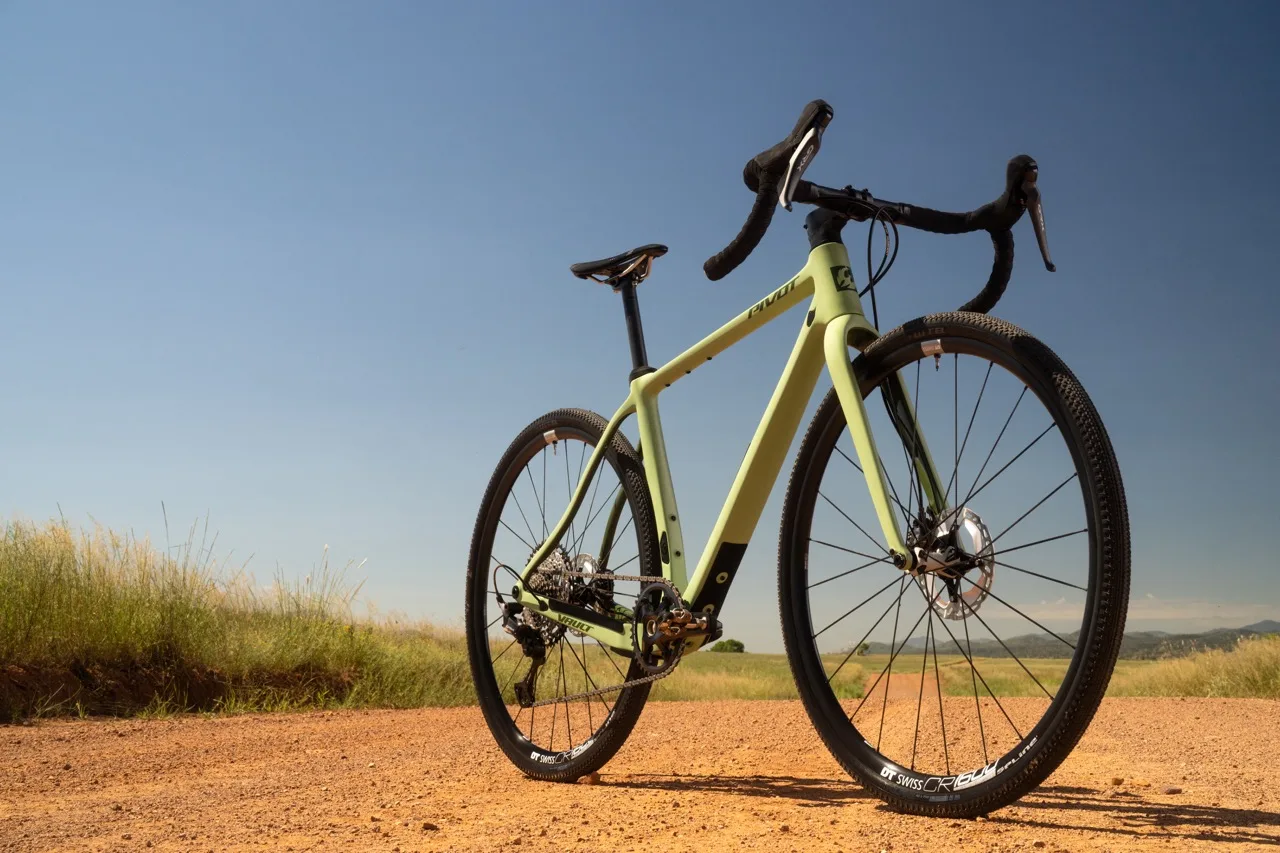
While Pivot doesn’t offer any complete builds with a suspension fork, the frame is suspension-corrected and runs a 415mm axle-to-crown fork with a 52mm offset.
Iso-Flex Slims Down, Drops 30.9 Option



It’s not just the geometry that increases comfort – Pivot Iso-Flex is back and better than ever. The new version is lighter and less bulky, giving the frame a more streamlined look. It’s still obvious that something is up with the seat tube, but you’d be forgiven to think it was just some sort of aero treatment rather than a ride-smoothing seatpost damper.
For those uninitiated, Iso-Flex is essentially a damping sleeve that sits between the seat post and the frame. This sleeve absorbs vibration and impact before it travels up to the seat post to the rider, making for a more comfortable ride. The newest version is comprised of a tuned elastomer with a fiber-reinforced nylon inner sleeve and a custom seatpost clamp. It’s also now compatible with 27.2mm seatposts only (Gen 3 could run 27.2 or 30.9), but it’s still dropper post compatible. It’s also serviceable with only Allen wrenches.
More Drivetrain and Cable Routing Options
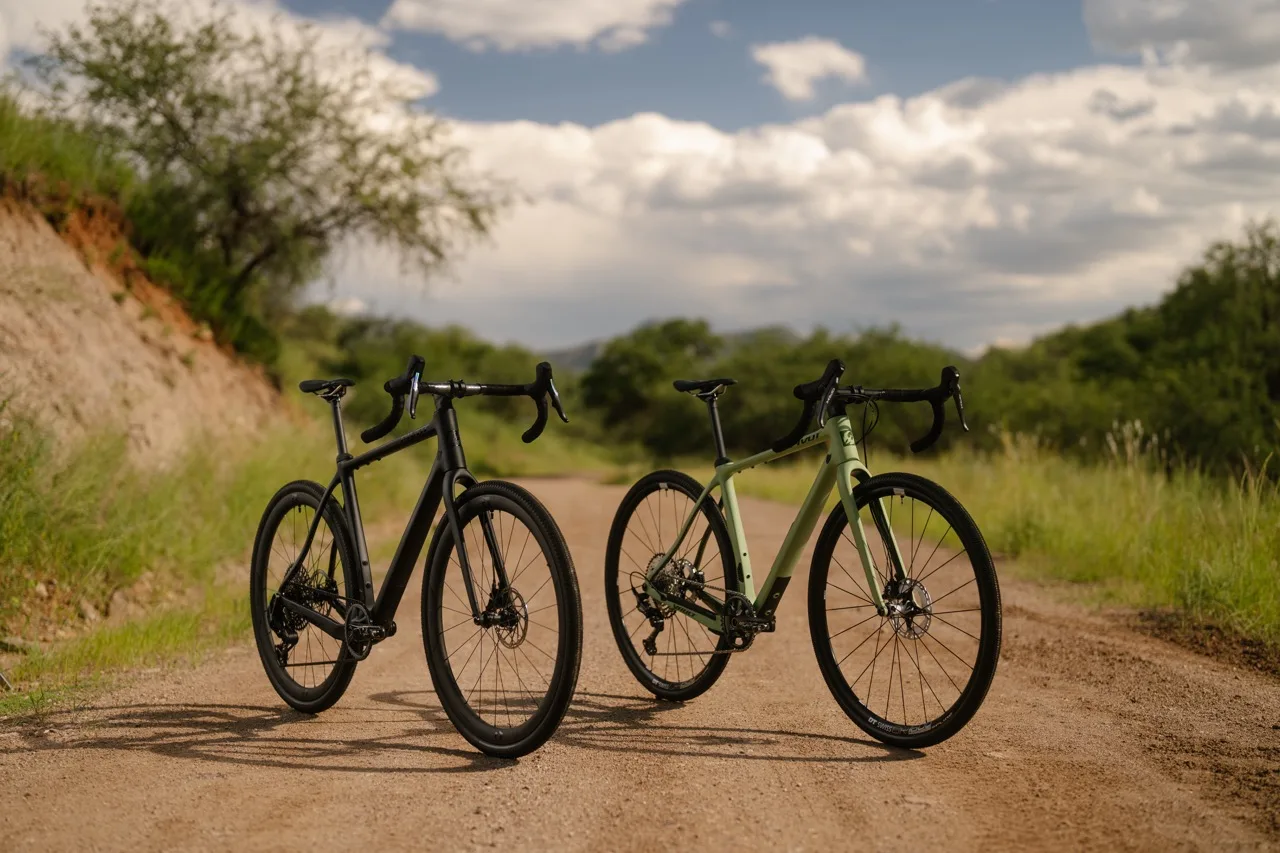
It’s no secret now, SRAM RED XPLR 13 is here and it requires UDH. Naturally, most new gravel bikes we’re seeing include the move to a UDH dropout like the Vault. As a reminder, the UDH hanger is compatible with any rear derailleur, not just Transmission.
Ready to argue about fully integrated cable routing through the headset? No need. The Vault can route the cables through the headset if you want the cleanest look, but it can also run them through the downtube using the Pivot Cable Port System. All bikes will ship with the Pivot Gravel Stem which can direct the cables into the included Token C-Box headset.
Better still, Pivot will ship these bikes to dealers without the cables run so the customer can choose how they want it run, swap stems, add/remove spacers, etc. Pivot also imagines this will be useful for fitting – if you’re not sure of your perfect fit, you can initially fit the bike with longer hoses and run them through the Cable Ports, then once you’re dialed, you can route it through the headset if you prefer.
Tire Clearance
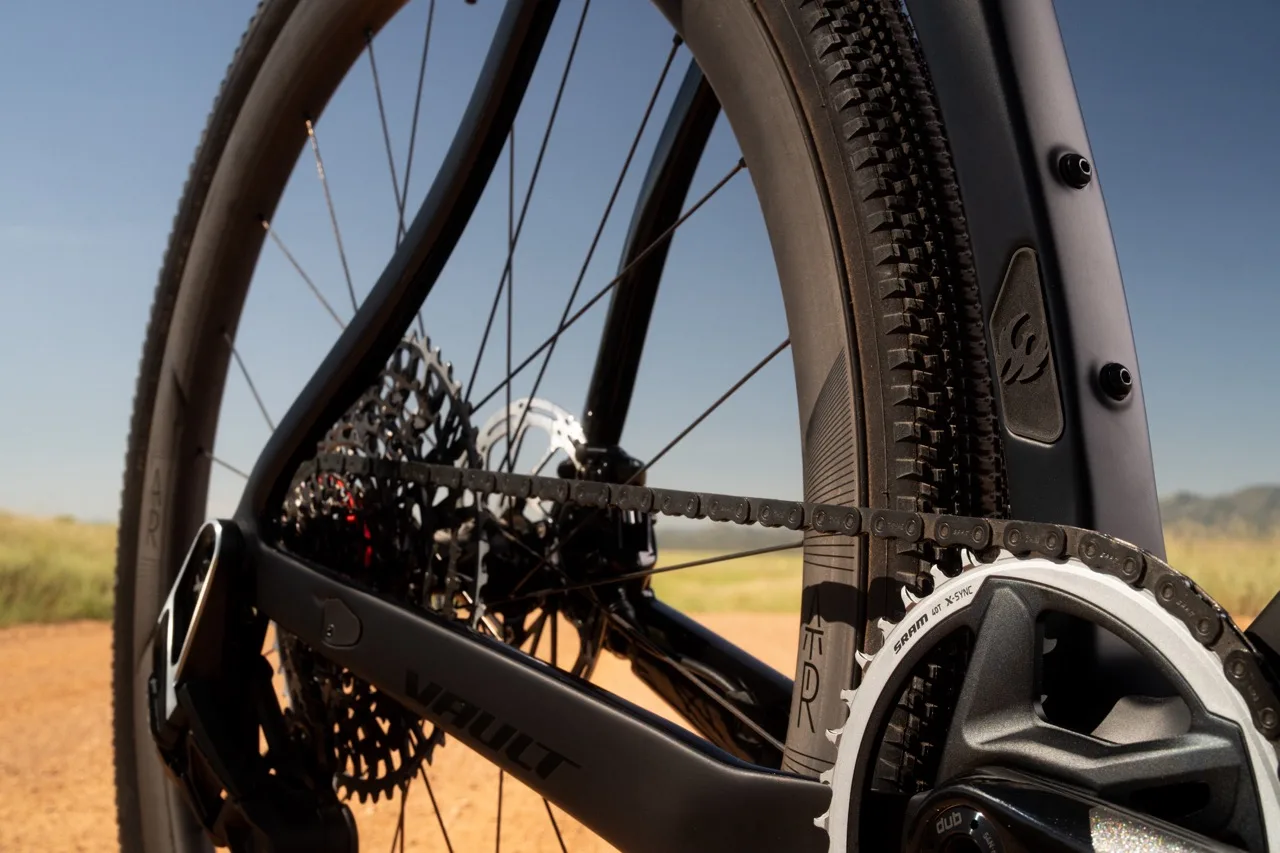
Even by modern standards, the previous generation Vault already had excellent tire clearance at 700c x 47mm. Now, it tops out at 700c x 50mm, or 700c x 47mm with fenders.



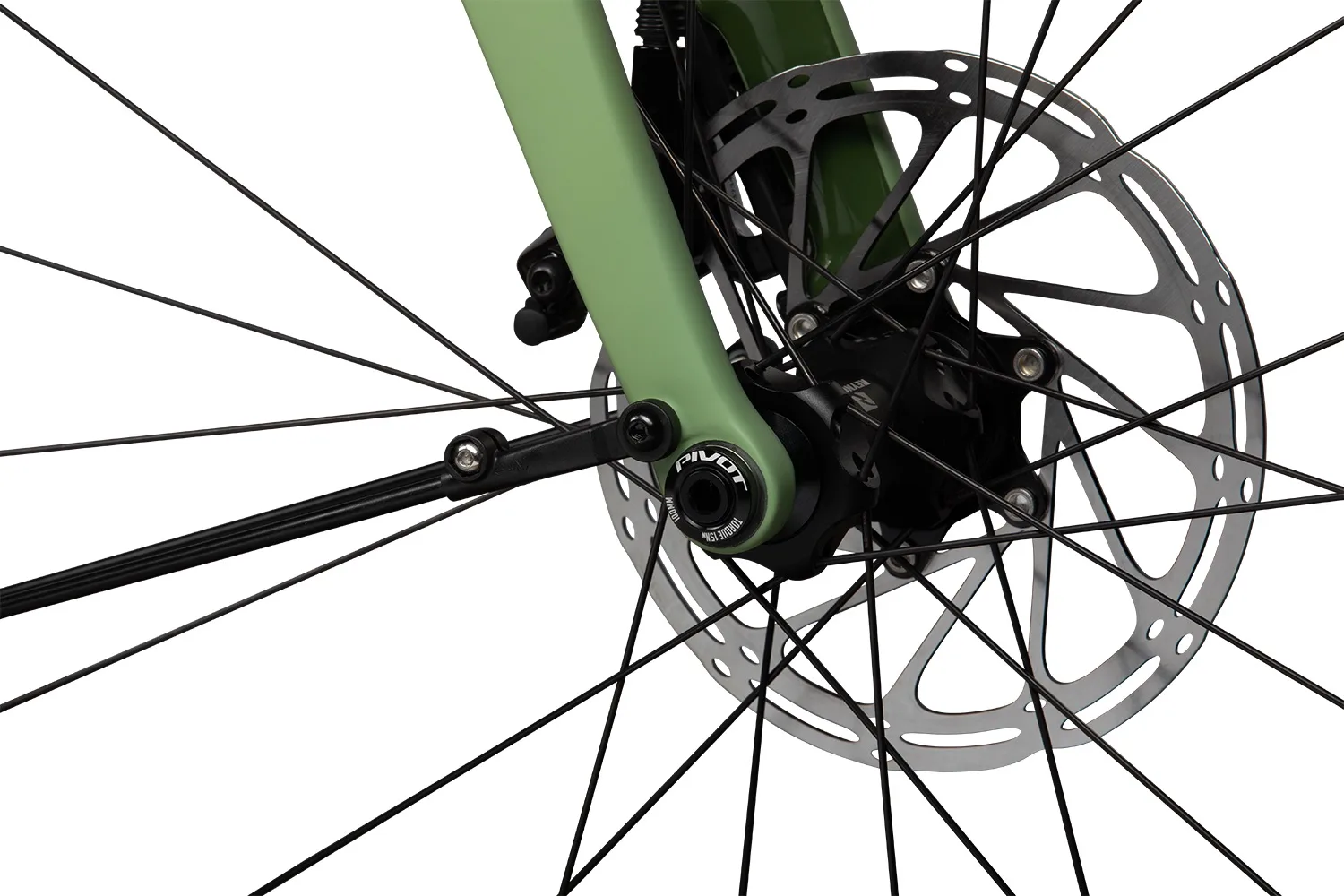
Yes, the Vault is fender-ready with hidden mounts and a removable rear fender bridge.

On the topic of mounts, the Vault has a LOT of them. Apparently, it can fit five water bottles on the frame, four inside the main triangle and one beneath (it’s not clear what frame sizes can hold what bottle sizes). There’s also a top tube mount for gas tank-style bags.
Head to the Toolshed for a Spare Tube or Chain Link
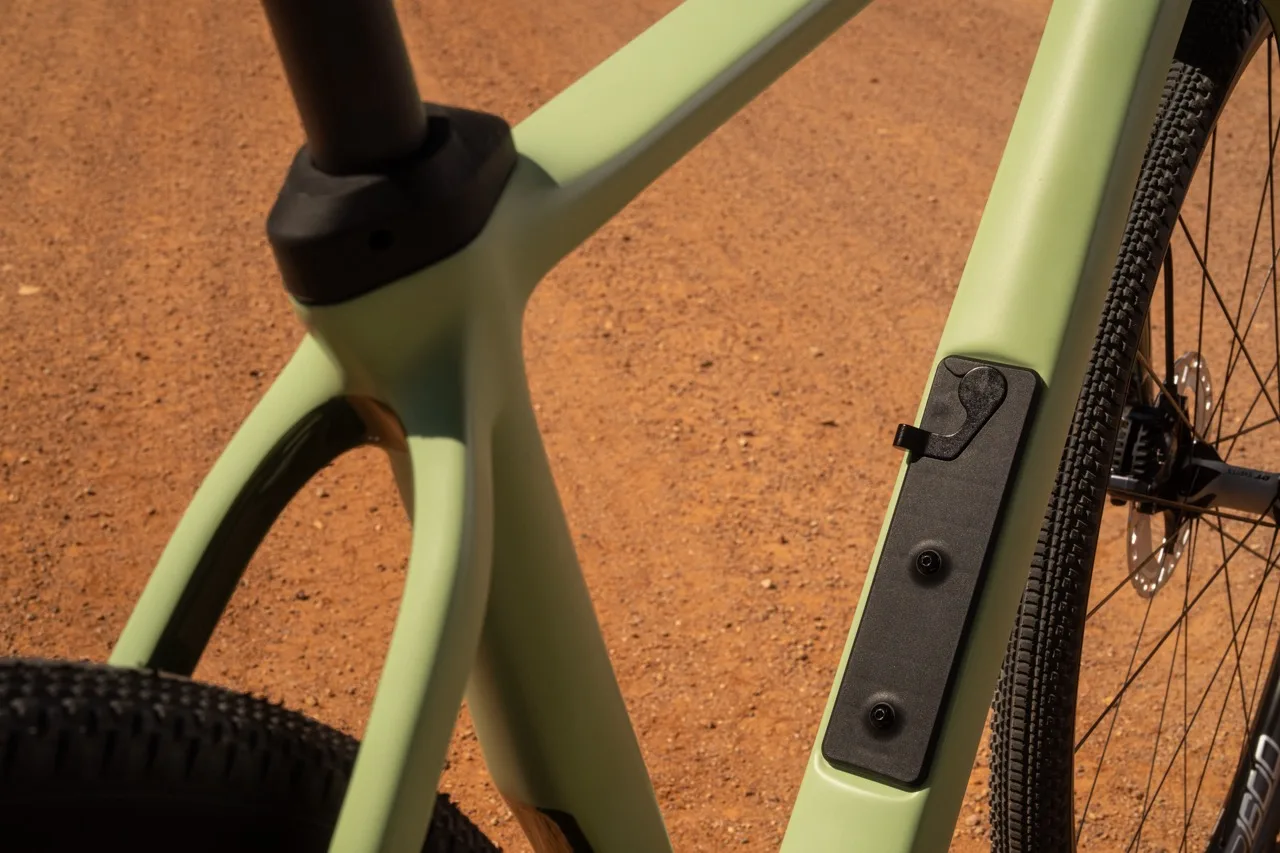
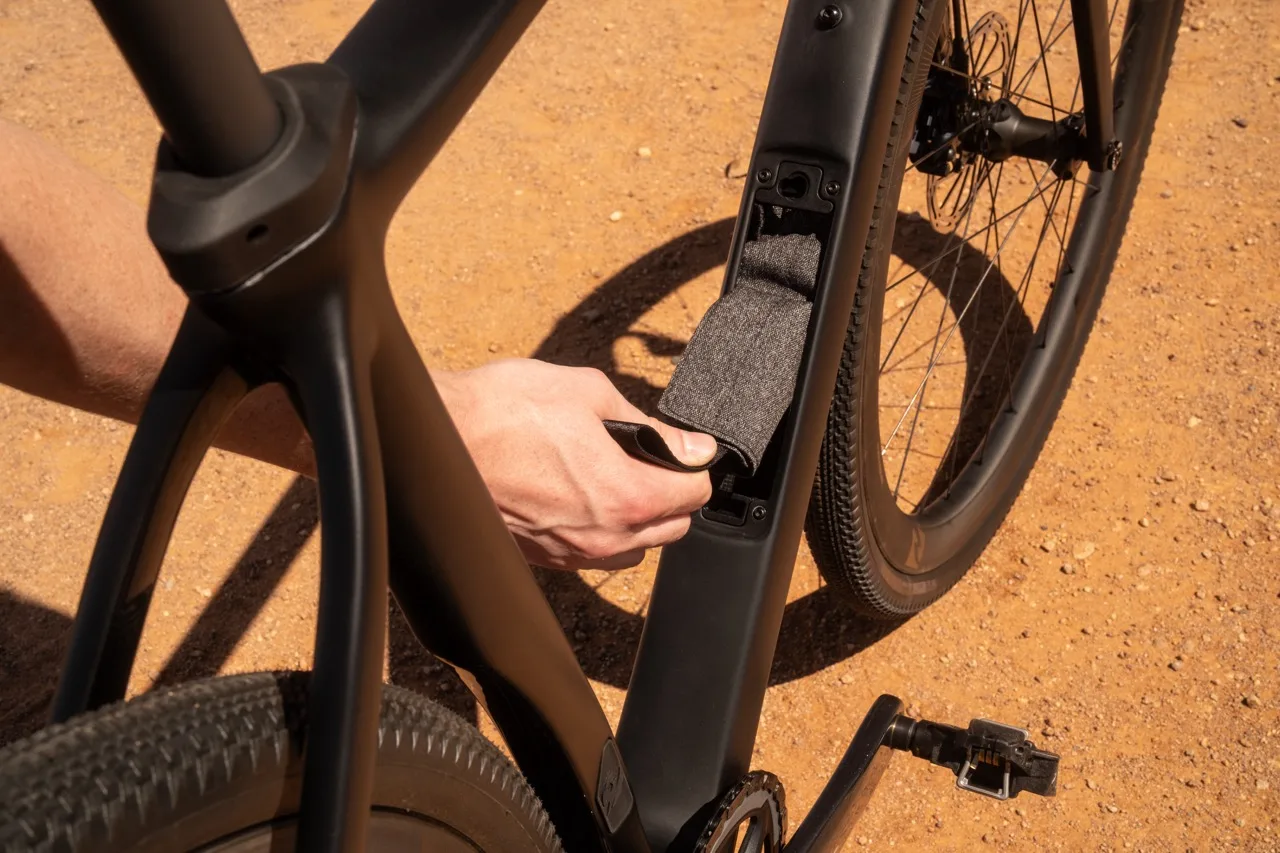
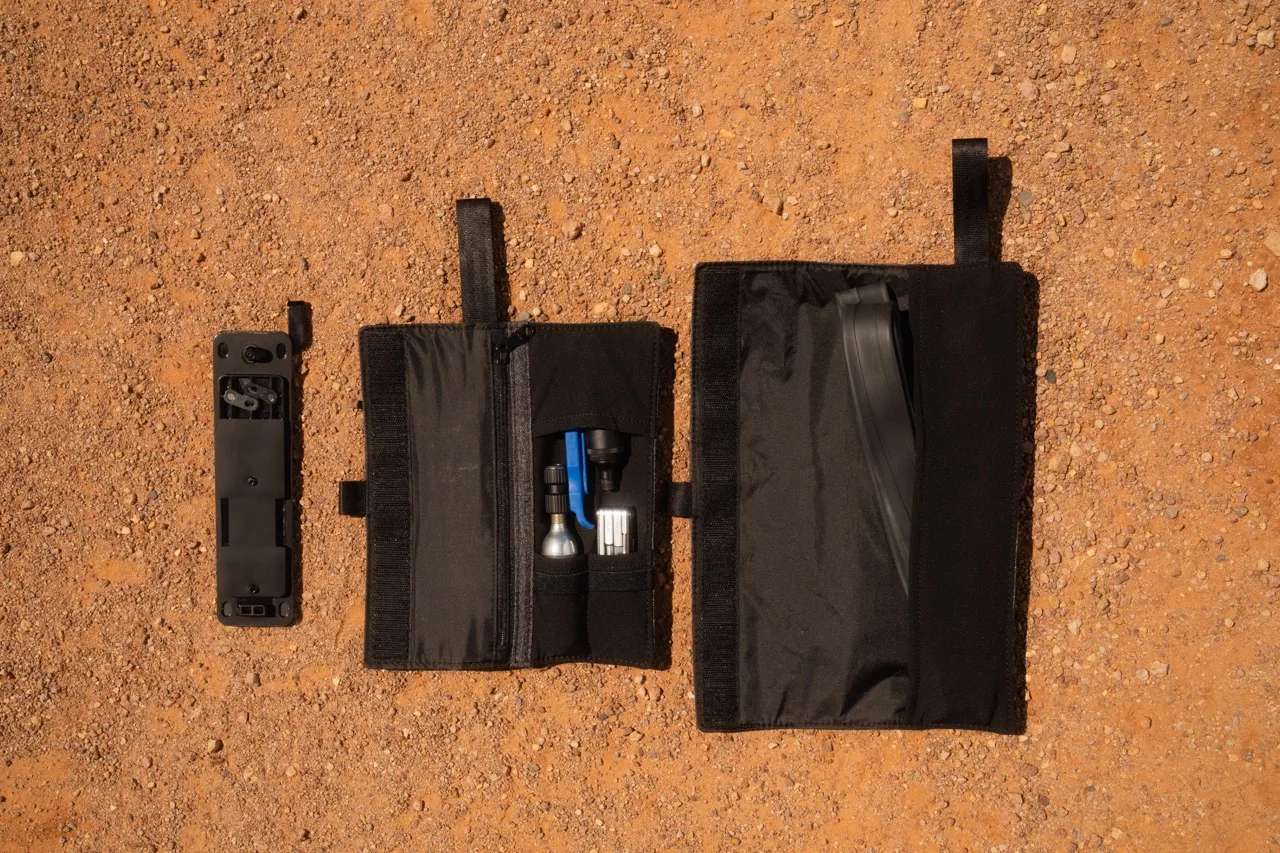
If that’s not enough storage, we haven’t even mentioned the new ToolShed yet. Pivot’s take on in-frame storage includes a simple and secure latching door with some trick features including an integrated magnet for storing chain quick links. There’s also an integrated strap loop to attach tools or accessories to the door.
Inside the frame, you’ll find two ToolShed bags which are designed to store a spare inner tube, tools, etc. The ToolShed door also includes clips to hold internally routed cables out of the way to prevent them from impeding the installation or removal of your tool bags. One of the clips is also designed to be slightly looser to allow you to slide your dropper post cable in or out to adjust the position or remove it from the frame.
Other Frame Details

The Vault continues with a front derailleur option with a removable braze-on plate that can also be used for an upper chain guide if running 1x. Spacing is a standard 142mm rear, and 100mm front, and Pivot continues with their use of the BB386EVO Press Fit bottom bracket. You’ll also find a molded rubber downtube and chainstay protector.
All in, the new frames weigh in at a claimed 995g for a small without hardware. That’s down from 998g for the previous gen, which isn’t much – until you consider that the new frames are longer, taller, offer more tire clearance, and include the ToolShed storage. Impressive.
- FRAME WEIGHT – 995g, small frame, no hardware
- FORK WEIGHT – 428g uncut
- FORK SPEC – ATC 415mm, 1.125”-1.5” tapered
- FORK OFFSET – 52mm
- HEADSET SPEC – compatible with 52mm integrated bearing systems
- HUB SPEC – 100mm front, 142mm rear
- MAX TIRE SIZE – 700x50mm
- BB TYPE – 386EVO Press Fit
- MAX CHAINRING – 46T for 1x setups
- SEAT POST DIAMETER – 27.2mm round
- DERAILLEUR COMPATIBILITY – UDH
Builds & Pricing


Available in Stealth Black or Mossy Forest, the Vault will be offered in three build options with one Shimano and two SRAM builds.
The Pro GRX build is priced at $3,999 and includes a Shimano 1×12 GRX drivetrain with DT Swiss CR 1600 Spline wheels. The Team Force XPLR AXS build bumps up to $4,999 and includes a SRAM Force XPLR ETAP AXS 1×12 drivetrain with a 10-44t cassette and DT Swiss CR 1600 Spline wheels. The other option is the $5,499 Team Force/X0 Wide Range AXS build which bumps the cassette up to a 10-52t with a mullet drivetrain.
Both the SRAM builds can be upgraded to Reynolds ATRx carbon wheels for an additional $650. All models will ship with 700c x 40mm WTB Vulpine TCS Light/Fast rolling 120 TPI tires with SG2 casing up front, and GS2 casing in the back.
Check out the bikes below for a more detailed spec.
